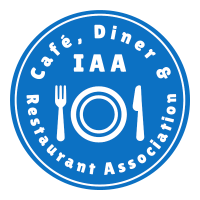These days, we store our photos, stream our movies, and even run our businesses in the cloud. And more and more often, whether we realize it or not, it’s also where we’re ordering our food.
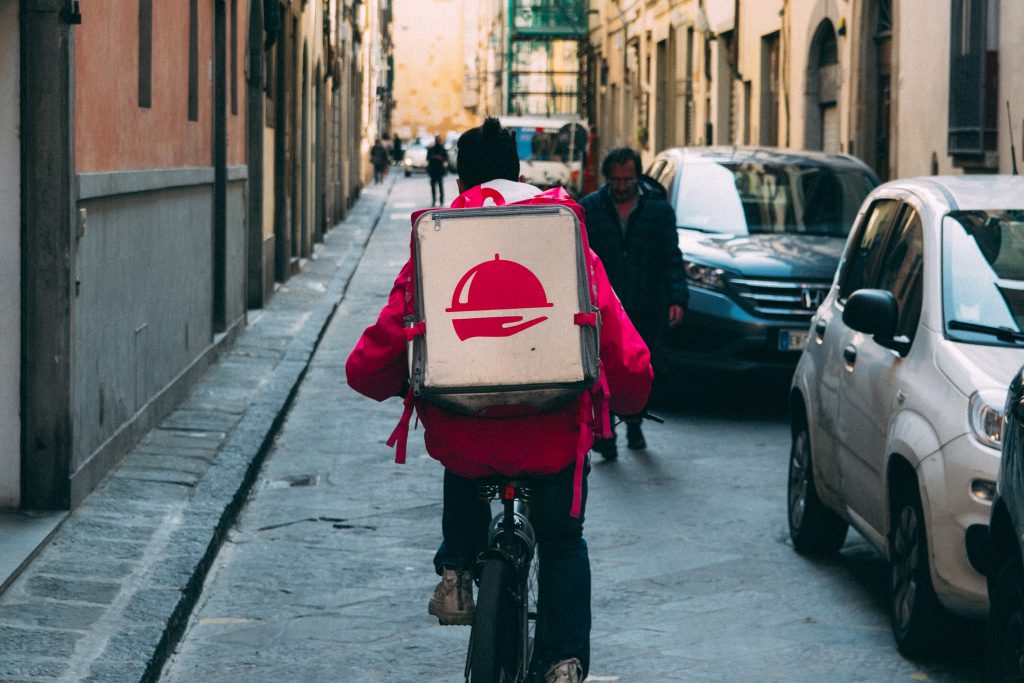
Introducing cloud kitchens, commercial facilities purpose-built to produce food specifically for delivery. These commissary kitchens are sometimes also known as ghost kitchens, shared kitchens, or virtual kitchens with the delivery-only food brands operating within them called virtual restaurants.
Maybe you’re thinking: “this is nothing new” and in a way, you are right. Chinese restaurants have been making the most of delivery for decades. And the pizza industry has practically built its business around optimizing for delivery. But moving to a delivery-only model has been made possible recently by advances in technology and changes in consumer habits. It offers certain advantages over offering delivery from a traditional brick-and-mortar restaurant.
Before we get into how a cloud kitchen differs from a normal restaurant offering delivery, let’s take a look at where The Food Corridor fits in.
Where does The Food Corridor fit in the cloud kitchen model?
There are increasing opportunities for food entrepreneurs either looking to start a virtual restaurant or start a commissary kitchen. Here at The Food Corridor, we know a bit about commercial kitchens and the food businesses that operate within them. By observing this trend first-hand, we have been able to help more than 150 clients optimize their shared kitchens to take advantage of this changing market.

In fact, through our sister app, The Kitchen Door, we’ve facilitated thousands of new connections between food entrepreneurs looking for a commercial kitchen to expand their business and existing commercial kitchens looking to rent out unused space. And we’re seeing increased interest on both sides.
We’ve also noticed that food entrepreneurs are increasingly seeking commercial kitchen space to launch their own virtual restaurant concepts and shared kitchens in our network are responding to the demand by offering additional services to maximize the efficiency and success of virtual restaurant tenants.
Our mission is to nurture this community and continue to connect supply with demand while also helping shared kitchens run their businesses more efficiently by providing them with software purpose-built for them.
This article is a good starting point to learn the cloud kitchen basics. First, we’ll take a look at how a cloud kitchen actually works. Then, we will look at the most common delivery-only business models, followed by the pros and cons of running a cloud kitchen.
Finally, we’ll explore the industry trends surrounding shared kitchens and what the future looks like for this new era of food delivery, before pointing out further resources for those looking to set up their own cloud kitchen business.
First things first…
How does a cloud kitchen work?
Cloud kitchens are centralized licensed commercial food production facilities where anywhere from one or two to dozens of restaurants rent space to prepare delivery-optimized menu items. One restaurant may run multiple brands, or virtual restaurants, all operating under one roof, or the kitchen may be run like an incubator, shared by different purveyors. Picture a large warehouse with numerous stations (mini-restaurants) of stainless steel prep tables, hood vents, stoves, ovens, and sinks, each with its own orders coming in direct from customers.
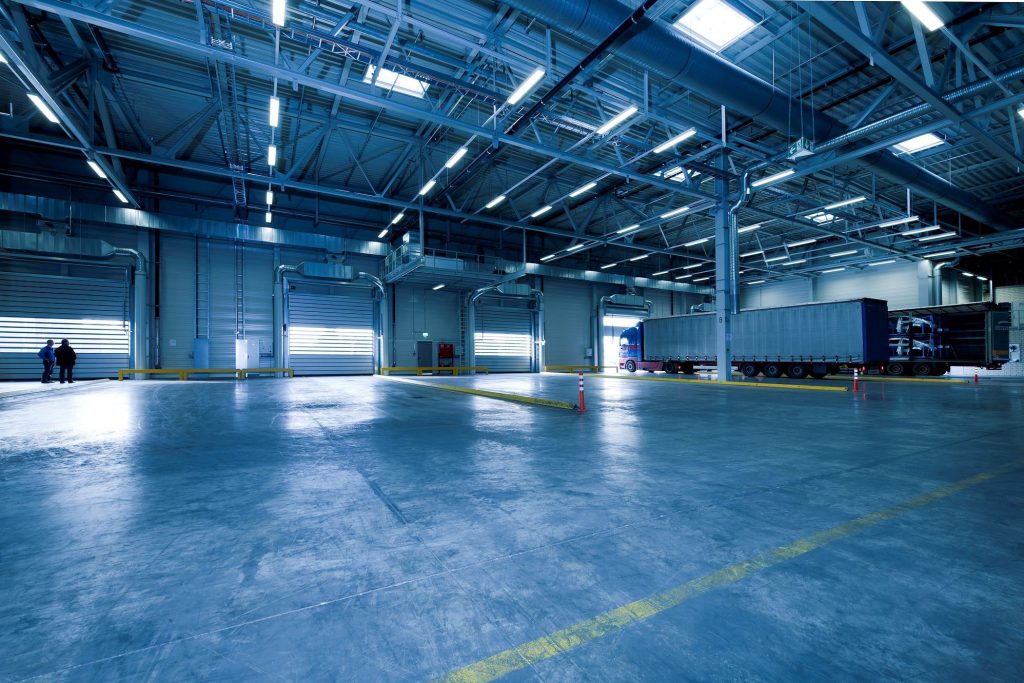
Cloud kitchen menu items are optimized for ease of production and reliability of food quality upon delivery. Often physically located in out-of-town industrial complexes, cloud kitchens may offer driver parking, driver waiting areas (often with screens to monitor order times) and check-in stations for seamless driver pick-up. All designed to get food out the door and into the customer’s hands as fast as possible.
Cloud kitchens are uniquely tech-enabled. They take advantage of the now ubiquitous food delivery apps on your smartphone, such as UberEats, Grubhub, and Doordash. In doing so, they use large amounts of data to determine what types of foods to produce for specific neighborhoods and when the demand is likely to be greatest. For example, hot wings tend to be really popular between 11pm-2am near college campuses. This data is fueling rapid adaptation and optimization, almost in real-time.
As the technology has matured, additional services have emerged to aggregate the various delivery apps into one portal, for easier production of multiple orders and delivery coordination as well as smart food purchasing and production software for decreased food waste and increased per meal unit economics. We have only seen the tip of the iceberg of innovation in this space.
Cloud kitchen business models
There are distinct approaches to running a cloud kitchen, ranging from adding an opportunistic delivery-only brand to an existing restaurant kitchen all the way to running a purpose-built commissary kitchen housing multiple brands.
Let’s take a closer look at how the current cloud kitchen business models differ.
Adding a delivery brand to your existing brick-and-mortar restaurant kitchen
Restaurants that have seen much of their business go online with the rise of delivery apps are taking advantage of their existing kitchens by adding delivery-only brands to their in-house offering.
This approach allows them to squeeze the most out of their existing staff, storage, ingredients and kitchen space for extra profit. They are also able to offer orders for pick-up from their physical location. The delivery-only menu items could be similar to what the restaurant currently offers, or it could be completely different. An Italian restaurant, for example, might offer a delivery-only pizza brand out of the same kitchen, or it could diversify and offer takeaway gyros for delivery or pick-up.
There are potential downsides to this model. First, the kitchen is not purpose-built for delivery, so the delivery orders may be bumped down the list of priorities when the restaurant is busy. It may also impact the experience for diners, having delivery drivers from multiple providers coming in and out and waiting for orders in the restaurant. And things can get messy trying to juggle multiple orders with two sides of the business getting in the way of each other.
Figuring out this work-flow is a real challenge. This can be seen as cloud kitchen version 1.0. There is a step-up to what we really mean by a cloud kitchen…
Running a virtual restaurant (or “ghost restaurant”)
When the consumer-facing side of a kitchen is exclusively in the cloud (ie. when it doesn’t have any physical storefront, food truck, or pick-up location), it is a true cloud kitchen. Dedicated cloud kitchens are able to solve some of the pain points mentioned above by prepping a number of different brands while targeting each brand according to consumer demand.
Each of these brands is known as a virtual restaurant and one business model is to run a delivery-only kitchen housing one or more of these. The virtual concepts look independent to a consumer making an order, but in reality, the food production is happening in an off-the-beaten path warehouse or food factory alongside other virtual restaurants.
To run a virtual restaurant, one needs a licensed brand or concept, commercial kitchen space to rent during operational times, visibility on a delivery-app, and coordinated labor, delivery supplies, and ordering of ingredients. A cloud kitchen provides all of the operational needs of a virtual restaurant.
Running a shared cloud kitchen
Another way to turn a profit from the boom in food delivery is to operate a cloud kitchen as a business in itself. More and more entrepreneurs are renting kitchen spaceto multiple third-party brands, acting like a coworking space and incubator for food producers. At The Food Corridor we’ve developed a turn-key shared kitchen management software to help these entrepreneurs.
This model involves acting more like a landlord rather than as a food producer. Although, you may need to become more hands-on in helping to promote and provide services for the brands who rent your kitchen space if you want them to succeed. Oftentimes this model includes maintaining the property by providing pest control, equipment maintenance, and security services. Others provide additional resources like chemicals, cleaning supplies, smallwares, paper towels, and other services like dishwashing and laundry.
What are the benefits of cloud kitchens for businesses?
Now we know the ins and outs of what constitutes a cloud kitchen, let’s take a look at the benefits compared to the traditional restaurant business model.
Low overheads
One of the biggest challenges for restaurant operators is staffing costs and compliance with ever-stricter labor laws. Cloud kitchens can more easily take advantage of on-demand labor and don’t have to worry about service staff at all.
The barrier for entry is far lower for cloud kitchens compared with traditional restaurants. Ghost kitchens theoretically incur lower costs by eliminating the need for any front-of-house operations, floor space for seating, or high rents for storefronts with high foot traffic in prime locations.
It’s also possible to save on ingredient costs by taking advantage of economies of scale. For example, making larger orders for a number of different delivery-only brands operating from the same kitchen. These savings can be passed onto the consumer to give virtual restaurants a competitive edge over traditional restaurants.
Better efficiency
Using custom-built spaces and optimizing their processes specifically for delivery, ghost kitchens can run very efficiently. If you are operating several brands from one kitchen, you can batch prep ingredients for several different menus and design the kitchen to prioritize the speed of preparation and the process of handing over meals to delivery drivers.
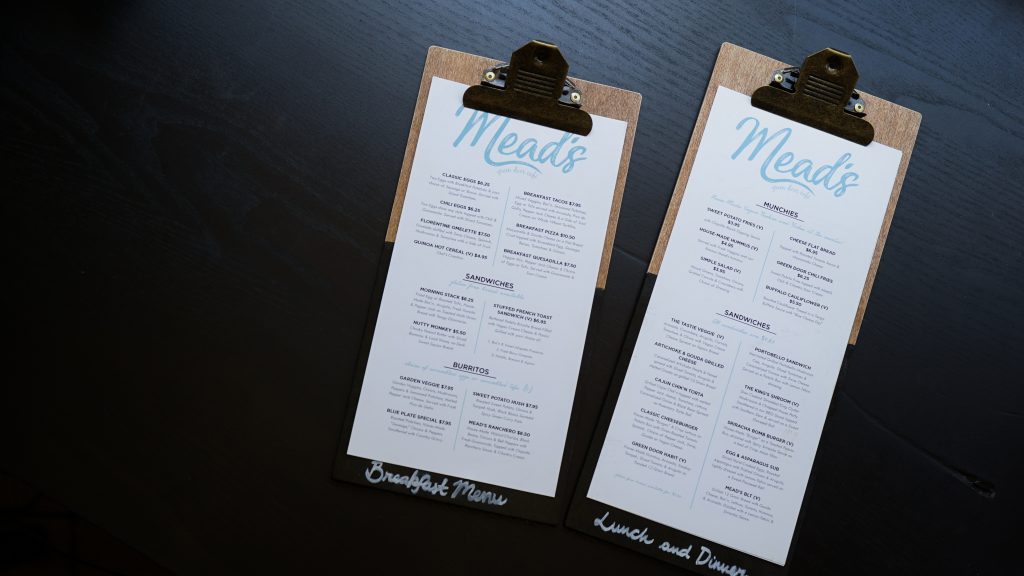
Access to user data and real-time adaptability
Because they are designed with tech in mind, cloud kitchens can optimize processes, ordering, and staff scheduling based on consumer behavior. The menu can also be adapted to suit demand and increase margins, optimizing the model over time.
Not being tied to a physical location means you can change the menu or operating times to suit business needs without as much of an impact on customer satisfaction. This can also help to decrease food waste, as you can be smarter with ordering and prep decisions.
In fact, virtual restaurants are so adaptable, you can even launch a brand just for a season. For instance, you could launch a healthy salad brand for the summer and a hearty poutine concept for the winter months, allowing you to take advantage of the seasonal demand for each type of food without enduring any downturn.
Digital brand awareness without high marketing spend
Virtual restaurant brands can gain quick exposure through delivery apps, rather than having to market themselves. Although a new virtual restaurant concept will have to pay for visibility, which is part of the delivery app business model, this can still work out cheaper overall, especially if you are creative about building your brand.
What are the potential challenges with ghost kitchens?
With any new technology, there are going to be certain drawbacks along with the benefits. Here are some of the potential challenges that come with running a cloud kitchen.
Working with on-demand staff
Running a cloud kitchen, you may be more inclined to hire on-demand staff to control margins. While this can save on your wage bill, it comes with some caveats. Since staff won’t be interacting with guests or getting tips, it could feel more like working in a factory than a hospitality job. Of course, you can try to boost morale and motivate staff in other ways, but it may be more difficult to build a brand culture if you are not attracting the top foodservice talent.
Hiring on-demand staff also carries risks in terms of food safety and consistency, both vital to successful food businesses. Can you be sure these workers have adequate training? If you want to invest in training, it makes more sense to hire permanent staff members. There is a trade-off here that you will have to work on to try to figure out the best balance between on-demand workers and permanent staff.
Reliance on third-party delivery apps
For all the benefits of using delivery apps, it’s never a good business decision to rely on one source of customers. The high fees can also eat into your margins and you have little control over last-mile delivery which can affect the quality of the food and put your reputation at risk.
One way to counter this is to offer your own delivery service, but this comes with higher marketing costs and logistical complications. It may make sense for large shared kitchens where multiple brands can share the burden.
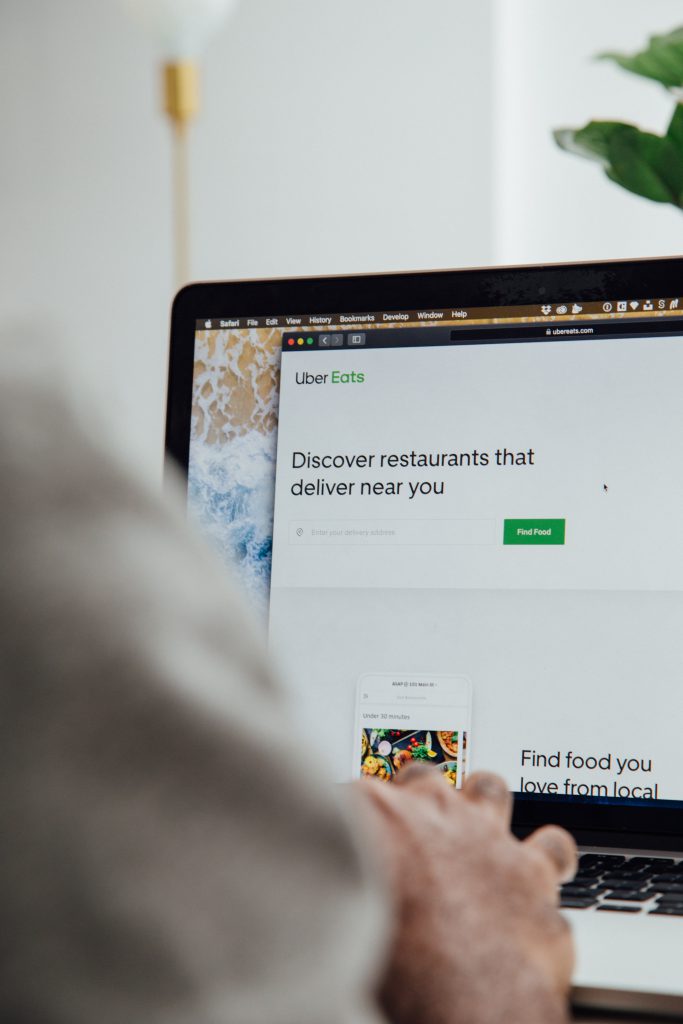
Competing in a crowded digital marketplace
With no physical location, cloud kitchens don’t benefit from walk-in traffic. You are competing exclusively in a crowded online marketplace. The good news is, if your product is good enough, it should rise to the top thanks to social proof like good reviews and word-of-mouth referrals.
But you may find yourself having to pay for visibility on these platforms. That is, after all, how they make their money. You should be aware of this potential added cost, especially at the beginning, before you’re able to develop your own loyal following.
Food quality and food safety
With a delivery-only brand, your reputation relies on the food getting to the customer in perfect condition. Getting this right is the only way to get repeat orders. There are significant challenges in keeping the product at proper temperatures so it arrives as intended to the customer. Not just at the right temperature for them to best enjoy it but also to ensure it is safe to eat.
This means testing out different types of packaging and potentially investing in containers that are more expensive and harder to source. This is a cost that can quickly add up when you are pumping out a high volume of orders, but it is a vital consideration. Soggy, luke warm food will guarantee failure. And one food-borne illness or outbreak and your brand is toast.
Local regulation and licensure
Food production is largely regulated at the local level by your health department. Since cloud kitchens are so new, regulators may be unfamiliar with the concept. They may start hitting you with unexpected requirements, or start treating you like a full-service restaurant.
Agents will want to see that food is being safely stored, produced, packaged anddelivered, which may require the production of HACCP and other production plans for review. Also, having multiple tenants producing under one roof increases complexity of who is licensed to produce and distribute food. You must be prepared to go the extra mile in showing them that your operation is safe and responsible.
What’s behind the cloud kitchen trend?
Cloud kitchens started popping up in the early 2010s in response to increased demand for high-quality meal delivery and rising rents in city center locations. Green Summit Group opened one of the first cloud kitchens in New York City in 2013, and have grown out to four locations across two cities. Many more start-ups have followed suit and as we enter a new decade, cloud kitchens are becoming big business, with venture capital pouring into start-ups specifically aiming to take advantage of this new market.
The trend is driven by the coming of age of millennials with disposable income demanding digital, mobile-friendly solutions. And this will only get more pronounced as the next generation, who have grown-up with the internet and smartphones, enters the marketplace (sorry boomers). Looking further forward, advances in kitchen automation, drone delivery, and the continued growth of the gig economy look to give cloud kitchens more of an advantage by lowering their costs even further.
Let’s take a closer look at the factors affecting the trend.
Real estate prices in urban areas
As urban real estate prices continue their upward trend, delivery-only kitchens are able to take advantage of their ‘virtual’ nature. The only restriction on their location is that they must be within a realistic delivery distance of enough hungry customers.
Companies like Kitchen United are focussing on light industrial areas outside dense urban centers but near enough to satisfy the demand of residential areas. Large warehouses at low rents are the perfect venues to house expansive shared kitchens, if you have the capital to outfit them. Using demand data collected from delivery apps, they are able to determine the best locations to serve particular neighborhoods.
Increase in demand for delivery
Food delivery is set to grow to a $200 billion industry by 2025, due to shifting changes in behavior, with nearly half of consumers preferring to eat at home. Uber is even more optimistic than most, valuing the market at $795 billion. With 91 million monthly users, Uber Eats is currently the most popular food delivery app. Consumers are increasingly willing to pay a significant amount for the convenience of having their food delivered.
Increase in on-demand contract workers
With the gig or sharing economy in full swing and expected to hit $335 billion by 2025, we’ve seen an increase in on-demand contract workers. The number of people working as ride-share drivers, delivery drivers, and remote workers is on the rise, offering low-cost labor with no strings attached from an employer’s point of view. But stability of the gig economy is still unknown. California recently passed a law that requires that some companies treat contract workers as employees.
Emerging technologies decreasing the cost of delivery
Looking further forward, drone delivery and kitchen automation are set to disrupt the standard restaurant model further. Robot kitchens are on the rise and drone delivery is poised to break through, with only regional regulations standing in its way.
Tech-minded shared kitchens are perfectly positioned to take advantage of these advances. They are much more able and likely to adapt quickly to new technology, giving them a further edge over storefront restaurants.
Who are the biggest players in the cloud kitchen space?
As cloud kitchens have gained momentum in the collective consciousness, money has started to flow in through early-stage investment. Cloud kitchen start-ups are seeing the potential and investors are jumping on board. A number of high-profile venture capitalists have emerged as the key players in the market. These investors have high hopes of making serious returns by getting in early.
An initial flurry of investment in delivery-only brands proved unprofitable in many cases. But investment in shared kitchen models is proving to be more sustainable in the longer-term. Munchery, ($125.4 million) Sprig, ($56.7 million) and SpoonRocket ($13 million) all went under after raising substantial VC money due to issues of unit economics and strains on managing the supply chain. Renting to independent operators who manage and optimize their own methods of production could be key, Momofuku founder David Changs’s Ando brand was acquired by UberEats after raising $7 million.
CloudKitchens
Uber founder and former chief executive Travis Kalanick, who resigned from the company in June 2017 amid controversy, has returned to the food delivery market through his new investment fund, 10100, or ’ten one hundred’.
Well-aware of the potential of food delivery and cloud kitchens, 10100 has invested $150 million into City Storage Systems, which will focus on undervalued real-estate. The holding company has two businesses, CloudKitchens and CloudRetail, the former opening large-scale shared kitchens with the aim of taking advantage of the delivery-only boom.
Although he is currently focused on more on India and China than the US, given Kalanick’s experience and connections at Uber, this is one to watch for the future.
Kitchen United
Former executives at Taco Bell and McDonalds have teamed up to create the fast-growing Kitchen United, which recently added another $40 million to its initial funding round of $10 million led by GV, the investment fund of Google’s parent company, Alphabet. With the might of Google behind it and experienced founders, Kitchen United is another big name to watch in the cloud kitchen world.
Virtual Kitchen Co
Virtual Kitchen Co. recently announced its formal launch after securing $15 million of Series A funding from ‘super angel’ investors Andreessen Horowitz and automation-focussed investment firm Base10 Partners. Virtual Kitchen Co, which already operates several delivery-only kitchens in San Francisco, plans to open a dozen more in the Bay Area in the next six months.
DoorDash Kitchens
Doordash is the first delivery platform to make a physical move in the cloud kitchen market. The San Francisco based company has opened a kitchen in nearby Redwood City, aimed at helping restaurant brands, including Chick-fil-A, scale the delivery side of their businesses.
The shared kitchen is strategically located to enable delivery and pick-up for affluent residential areas such as Palo Alto and Menlo Park, that the participating restaurant brands weren’t previously able to deliver to.
This is an experimental departure for DoorDash, so it will be interesting to see the results and whether other delivery platforms follow the lead.
How to get your slice of the cloud kitchen pie
If all this talk of cloud kitchens has inspired you to start searching for industrial warehouses for sale in your local light industrial zone, you’re in the right place.
Run your own shared kitchen
As we’ve seen, there are many advantages to running your own shared kitchen. The Food Corridor (TFC) offers software specifically designed to help entrepreneurs with the day-to-day running of their shared kitchen, making scheduling, billing, and member management easy and stress-free.
Trusted by an engaged community of entrepreneurs, TFC offers step-by-step guides on how to start your business and resources for every stage of the journey. Join the community today and make your dream of running a shared kitchen a reality.
Start a delivery-only brand
If you’re thinking of setting up a delivery-only food brand, head over to The Kitchen Door and type in your city or zip code. You will be given a list of rentable shared kitchens in your area, with all the details you need to find out more and get in touch.
Whether you’re thinking of starting a virtual restaurant or starting a commissary kitchen, we’ve laid out all the steps to get you going in this blog along with plenty of industry resources and free listings on The Kitchen Door to connect food businesses with commercial kitchen space for rent.
